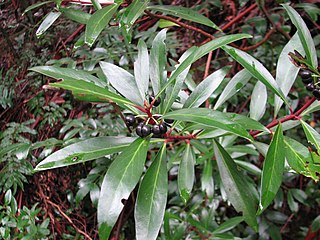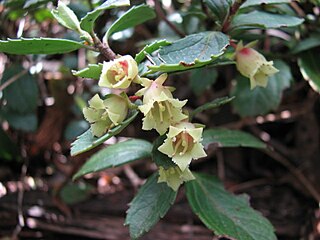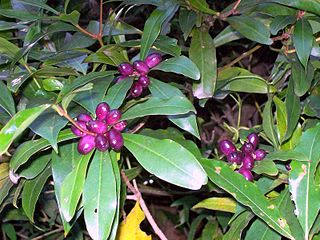
Gippsland is a rural region of Victoria, Australia, located in the south-eastern part of that state. It covers an area of 41,556 square kilometres (16,045 sq mi), and lies to the east of the eastern suburbs of Greater Melbourne, to the north of Bass Strait, to the west of the Tasman Sea, to the south of the Black-Allan Line that marks part of the Victorian/New South Wales border, and to the east and southeast of the Great Dividing Range that lies within the Hume region and the Victorian Alps. Gippsland is generally broken down into the East Gippsland, South Gippsland, West Gippsland, and the Latrobe Valley statistical divisions.

The Shire of Baw Baw is a local government area in Victoria, Australia, in the eastern part of the state. It covers an area of 4,028 square kilometres (1,555 sq mi) and in June 2018 had a population of 52,015.

Mount Baw Baw is a mountain on the Baw Baw Plateau and Great Dividing Range, located in Victoria, Australia. The mountain peak falls within the boundaries of the Mount Baw Baw Alpine Resort, which is an unincorporated area of Victoria separate from the Shire of Baw Baw. The name is derived from an Eastern Kulin word of unknown meaning 'baw-baw'.

Tasmannia is a genus of woody, evergreen flowering plants of the family Winteraceae. The 40 species of Tasmannia are native to Australia, New Guinea, Sulawesi, Borneo, and the Philippines. The Winteraceae are magnoliids, and are associated with the humid Antarctic flora of the Southern Hemisphere. The members of the family generally have aromatic bark and leaves, and some are used to extract essential oils. The peppery-flavored fruits and leaves of this genus are increasingly used as a condiment in Australia. The peppery flavour can be attributed to polygodial.

Drouin is a town in the West Gippsland region, 90 kilometres (56 mi) east of Melbourne, in the Australian state of Victoria. Its local government area is the Shire of Baw Baw, and is home to the council headquarters despite being the second-largest town in the shire, behind neighbouring Warragul. The town is supposedly named after a Frenchman who invented a chlorination process for the extraction of ore, or an Aboriginal word meaning "north wind". New housing developments have accelerated the town's residential growth in recent years. As at the 2016 census, Drouin had a population of 11,887 people.

Darnum is a small town in West Gippsland, Victoria, Australia, located 110 km east of Melbourne and a short distance to Warragul, in the Shire of Baw Baw. It is nestled between the Great Dividing Range and Strzelecki Ranges. The Moe River meanders through the edge of the township which the historic Darnum Butter Factory overlooks.

Mount St Gwinear is a mountain in Victoria, Australia, located at the north-east end of the Baw Baw National Park in the Gippsland high country. It is popular with families looking for a cheap and accessible snow-play/tobogganing destination and cross-country skiers. The Baw Baw Plateau provides an abundance of easy touring terrain. Mount Baw Baw downhill ski village is approximately 9 km away across the Baw Baw plateau to the south-west and trails link the resorts.

Tasmannia lanceolata, commonly known as Tasmanian pepperberry or mountain pepper, is a shrub native to woodlands and cool temperate rainforest of south-eastern Australia. The shrub varies from 2 to 10 m high. The aromatic leaves are lanceolate to narrow-elliptic or oblanceolate, 4–12 cm long, and 0.7–2.0 cm wide, with a distinctly pale undersurface. Stems are quite red in colour. The small cream or white flowers appear in summer and are followed by black, globose, two-lobed berries 5–8 mm wide, which appear in autumn. There are separate male and female plants.

Tasmannia stipitata, commonly known as the Dorrigo pepper or northern pepperbush is a rainforest shrub of temperate forests of the Northern Tablelands of New South Wales, Australia. Leaves are fragrant, narrow-lanceolate to narrow-elliptic, 8–13 cm long. Dark bluish to mauve berries follow the flowers on female shrubs. The species is dioecious, with male and female flowers on separate plants.

Tasmannia xerophila, commonly known as alpine pepperbush, is a shrub of eucalypt forest, alpine grassland and rocky terrain of New South Wales and Victoria, Australia.

Wittsteinia is a small genus of flowering plants in the family Alseuosmiaceae. The genus was first formally described by botanist Ferdinand von Mueller in Fragmenta Phytographiae Australiae in 1861. The name honours Dr Georg Christian Wittstein, the author of an etymological dictionary used as a reference by Mueller.

Tasmannia purpurascens, commonly known as the broad-leaved pepperbush or purple pepperbush is a shrub in the primitive family Winteraceae and is only found growing in the Barrington Tops and Ben Halls Gap regions of New South Wales. It is locally abundant in a restricted subalpine habitat with a high rainfall, often growing in the ecotone in association with Antarctic Beech.

Tasmannia insipida, the brush pepperbush, is a shrub native to Australia that can grow 1 to 3 metres high with reddish stems.
Tasmannia piperita is a species of shrubs or treelets native to Borneo, the Philippines, Sulawesi, the Moluccas, Flores, New Guinea, and Australia. It is the most widespread species of Tasmannia and the only one occurring outside of Australia.

Wittsteinia vacciniacea , the Baw Baw berry, is a shrub species in the family Alseuosmiaceae. It is endemic to Victoria, Australia. It grows to about 40 cm high and has leaves which are between 1 and 5 cm long. The fragrant flowers are between 4.5 and 7 mm long and are followed by greenish-white rounded fruits.

Mount Selma is a mountain located to the north-east of Aberfeldy in Victoria, Australia. Its peak is 1463 metres above sea level. The headwaters of the Aberfeldy River rise on its southerly slopes.
John Dallachy was a curator of Melbourne Botanic Gardens and a plant collector.

Orites acicularis, commonly known as yellow bush, is an angiosperm endemic to Tasmania, Australia and is a member of the genus Orites within the family Proteaceae. The species was first described in 1810 by Scottish botanist Robert Brown in Transactions of the Linnean Society of London.













